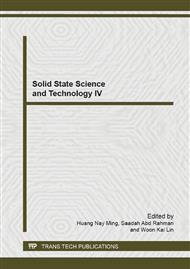p.513
p.520
p.526
p.531
p.535
p.539
p.547
p.558
p.567
Theoretical Studies of InGaN/GaN Multiple Junction Solar Cell with Enhanced Tunneling Junction Diode
Abstract:
Recent developments in the growth of InGaN layers made it possible to grow a heavily doped p-type layer with Indium concentration up to 40%. In this work, a tunnel junction based on these developments has been designed with the use of Silvaco TCAD. This diode introduces a low resistive path to the current carriers, effectively adds voltages and encounters the parasitic effects of the stacked sub-cells. A double-junction solar cell is designed based on our interfacing tunnel diode and simulated results are presented in this paper. Remarkable results are achieved comparing to the existing InGaN based multijunction solar cells. A high Voc of ~3.1V and conversion efficiency greater than 17.5% has been achieved under AM 1.5. This paper also highlights and discusses the challenges in fabrication of such a highly efficient solar cell.
Info:
Periodical:
Pages:
535-538
Citation:
Online since:
February 2014
Authors:
Keywords:
Price:
Сopyright:
© 2014 Trans Tech Publications Ltd. All Rights Reserved
Share:
Citation:



